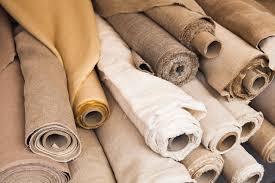
As the fashion industry grapples with its environmental impact, a growing number of brands and consumers are turning to sustainable alternatives. One of the most effective ways to support ethical fashion is by choosing eco-friendly fabrics. These materials are produced with less harm to the planet, use fewer resources, and often biodegrade naturally. Whether you're building a greener wardrobe or simply want to make more informed choices, here are the eco-friendly fabrics you should know about—and why they matter.
1. Organic Cotton
Organic cotton is a sustainable alternative to conventional cotton, which is known for its heavy pesticide and water usage. Grown without synthetic chemicals or genetically modified seeds, organic cotton farming supports soil health and biodiversity. It’s soft, breathable, and ideal for everything from t-shirts to underwear. Look for certifications like GOTS (Global Organic Textile Standard) to ensure authenticity. Not only is organic cotton safer for the environment, but it's also gentler on sensitive skin.
2. Linen
Linen, made from the flax plant, is one of the oldest and most sustainable fabrics in the world. Flax requires little water and can grow in poor soil conditions without the need for harmful pesticides. Linen garments are lightweight, breathable, and incredibly durable. Though they may wrinkle more easily than other materials, this natural characteristic adds to linen’s relaxed charm. It's ideal for warm-weather clothing and is fully biodegradable at the end of its life cycle.
3. Hemp
Hemp is a high-performing, fast-growing plant that requires minimal water and no synthetic fertilizers. Its fibers are strong, long-lasting, and naturally resistant to pests. Hemp fabric softens with every wash and becomes more comfortable over time. It's great for casual wear, outerwear, and even denim. Like linen, hemp is biodegradable, and its production process enriches rather than depletes the soil, making it one of the most environmentally responsible fabric options available.
4. Tencel (Lyocell)
Tencel, a branded form of lyocell, is produced from sustainably sourced wood pulp, often from eucalyptus, beech, or spruce trees. What sets Tencel apart is its closed-loop production process, which recycles nearly all water and solvents used, minimizing waste. The fabric itself is soft, breathable, moisture-wicking, and resistant to wrinkles. Tencel is commonly used in everything from activewear and undergarments to elegant dresses and blouses. It offers a luxurious feel with an eco-friendly conscience.
5. Recycled Polyester
While traditional polyester is derived from fossil fuels and contributes significantly to microplastic pollution, recycled polyester (also known as rPET) offers a more sustainable alternative. Made by repurposing plastic waste—often from bottles or discarded textiles—recycled polyester reduces landfill waste and energy consumption. Though it’s not biodegradable, using existing materials rather than producing new synthetic fibers significantly reduces the environmental footprint. Look for garments labeled as containing rPET for a more responsible synthetic option.
6. Bamboo Viscose (with Caution)
Bamboo is a fast-growing, low-impact plant that doesn't require pesticides or fertilizers. However, not all bamboo fabrics are created equally. Bamboo viscose is often chemically processed using harsh solvents that can be harmful to workers and the environment. Some manufacturers now produce bamboo fabric using closed-loop methods that are safer and more sustainable. To make an eco-conscious choice, opt for bamboo fabric that is OEKO-TEX certified or explicitly states it was made using environmentally friendly processes.
7. Piñatex
Piñatex is an innovative leather alternative made from pineapple leaf fibers—a byproduct of the pineapple harvest. It requires no additional land, water, or chemicals to produce. Piñatex has a leather-like texture and is used in fashion accessories, footwear, and even upholstery. As a cruelty-free and sustainable option, it’s gaining traction among designers who want to avoid animal products without compromising on style or function.
8. ECONYL®
ECONYL® is a regenerated nylon made entirely from waste materials, such as discarded fishing nets, industrial plastic, and fabric scraps. It’s used in everything from swimwear to outerwear and offers the same durability and stretch as virgin nylon, but with a drastically lower environmental cost. The closed-loop regeneration system used to produce ECONYL® reduces global warming potential by up to 90% compared to traditional nylon. It’s a smart, sustainable choice for high-performance and stylish fashion items.
Why Fabric Choices Matter
The materials we choose to wear affect more than just our personal style—they impact the environment, global water resources, and even workers’ health. Conventional fabrics can be resource-intensive, chemically processed, and non-biodegradable. Choosing eco-friendly fabrics helps reduce waste, lower carbon emissions, and protect ecosystems. As more brands move toward transparency and sustainability, consumers can drive change by supporting products made from ethical and responsible materials.
Final Thoughts
Eco-friendly fabrics offer a stylish, conscious alternative to the environmentally damaging materials that have long dominated the fashion industry. From luxurious Tencel to rugged hemp and innovative options like Piñatex, sustainable fashion is more accessible and diverse than ever. The key is to look beyond the label—pay attention to how a fabric is sourced, processed, and disposed of. By choosing clothes made from these fabrics, you're not just making a fashion statement—you're making a statement for the planet.